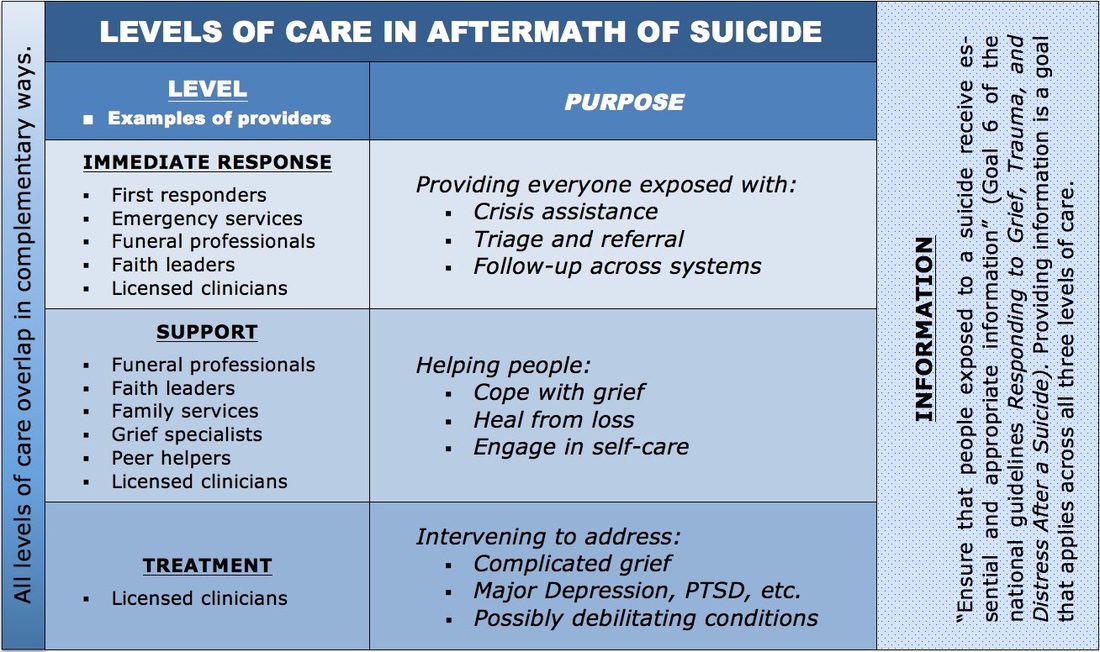By Franklin Cook
The special report "Systems Must Include Three Levels of Care for Aftermath of Suicide" (available to read or download below) is essential reading for anyone involved in developing, implementing, or assessing services designed to help people who have been affected by a suicide fatality, such as first responders, mental health practitioners, and the suicide bereaved.
Based on recently released national guidelines,* the report delineates three levels of care:
• Immediate response: crisis assistance, triage and referral, follow-up
• Support: assistance with grief and loss, self-help
• Treatment: interventions for potentially debilitating conditions
Quoting Goal 6 of the guidelines -- which is to "ensure that people exposed to a suicide receive essential and appropriate information" -- the report explains that providing such information is a goal that applies across all three levels of care. It also features an addendum, "Information for People Exposed to a Suicide" that outlines the kinds of information that are valuable to people exposed to a suicide and points to the online resource directory available at bit.ly/afterasuicide.
The report suggests that suicide postvention practices should be informed by well established principles in the fields of disaster and crisis response. For example, it outlines the principles of Psychological First Aid to illustrate the connection between responding to a crisis that traumatizes a community and responding to a suicide (which, the report says, can constitute a mental health crisis in its own right).
All three levels of care overlap, the report states, noting that all services ought to:
• be based on evidence of effectiveness,
• be sensitive to various socio-cultural perspectives,
• account for serious conditions that require a higher level of care, and
• promote collaboration among all organizations and providers.
Caring for the suicide bereaved is characterized as an emerging field of practice, and the report repeats the call to action from the national guidelines, for the development of "the infrastructure and delivery systems for training a wide array of service providers in suicide bereavement support and treatment and in minimizing the adverse effects of exposure to suicide."
The report is available for free, to read online or download:*Introductory material from Responding to Grief, Trauma, and Distress After a Suicide: U.S. National Guidelines (Table of Contents, Executive Summary, Acknowledgements, Preface) is available at bit.ly/excerptsosl, and the complete document is available at bit.ly/respondingsuicide. The guidelines were written by the Survivors of Suicide Loss Task Force of the National Action Alliance for Suicide Prevention.

 RSS Feed
RSS Feed